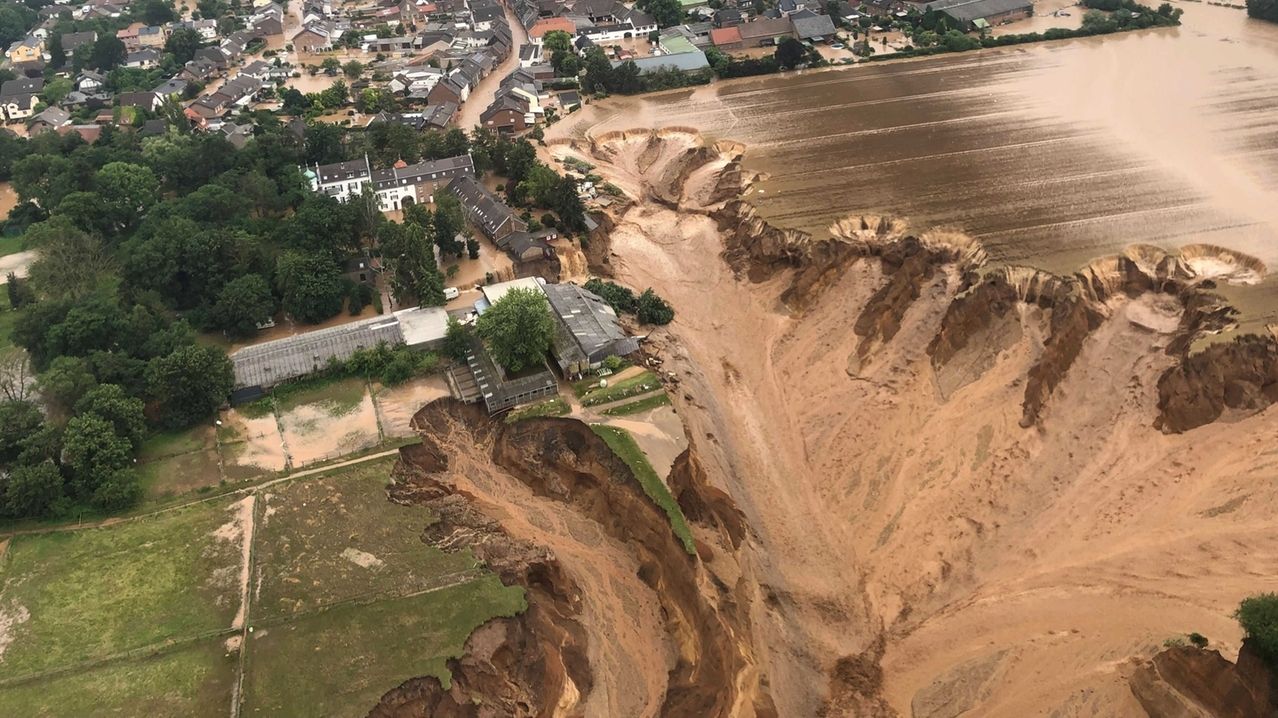Why join ecorisQ?
At the heart of ecorisQ is a global community of dedicated professionals. By joining us as a member, you access a trusted network and transparent tools that support reliable natural hazard analysis.
Membership reflects your commitment to transparent hazard analyses and sustainable solutions, grounded in integrity, collaboration and scientific excellence.
- Details
Due to exceptional rainfall intensities and quantities (150 - 270 mm in 48 hrs) between 13 and 15 July 2021, the area between Liège (eastern part of Belgium), Maastricht (southern part of the Netherlands) and Köln (mid western part of Germany) had to deal with an unprecented flooding disaster. In total, more than 220 persons lost their lives and estimates of the insured losses mount up to €2.55 billion, with the total damage costs being much higher. The return-period of the observed precipation scenarios is estimated between 30 to 100 years.

Due to climate change it is expected that the occurence frequency of such extreme precipitation events increases. In addition, the older series of precipitation measurements cover about 300 years, meaning that we did not yet observe many of those extreme events. Therefore, although robust climate change signals are detected for future seasonal and multi-day extremes, uncertainty in our current extreme value statistics still need to be taken into account wenn preparing our natural hazard management strategy for the future. Thinking the unthinkable will have to be one part of it, meaning that we also will have to simulate and assess the impacts of events which we did not observe until now.

- Details
There's no love song finer, but how strange the change from major to minor,
Everytime we say goodbye (Ella Fitzgerald).

We, the ecorisQ board, mourn the loss of our co-board member, colleague and friend Karl (Charly) Kleemayr, who passed away last friday. We remember Karl as a highly motivated and cheerful person, a natural hazard enthusiast, always coming up with new ideas for research and collaborations. But surely not only that, he will remain in our memory as jazz lover and everything that goes with it, as well as a virtuous saxophonist and helpful friend. He could always be relied upon to bring a sense of happiness, fun, and a little mischief in our gatherings. The official obituary of the BFW, the organisation where he worked, can be found here. He will be sorely missed by us and the wider community. Our thoughts and condolences go particularly to his wife and son as well as to the wider family.
- Details
There is no need to re-iterate that 2020 has been an unusual year. Our seventh general assembly parallel to the 5th International Conference on Soil, Bio- and Eco-Engineering in Bern was cancelled, just like all planned training courses on Rockyfor3D and SOSlope. Nevertheless, we continued working on new tools. For example, all ecorisQ tools are now available for Windows (64 and 32 bit), Mac and Linux. In addition, we finished the development of the beta version of SlideForce - a hillslope debris flow runout simulation model - that will be made available in the beginning of 2021. In paralell, we are in the process of finalising SlideForMap (a tool for regional shallow landslide disposition assessment) and BankForMap (a tool for assessing bank erosion at catchment scale). Both tools will be released in 2021 as well.
Due to COVID-19, the cancelled general assembly and the additional daily work (especially in university teaching), we decided to publish a combined association report 2019-2020 in spring 2021. We sincerely hope that we will be able to organise the seventh general assembly parallel to the 5th International Conference on Soil, Bio- and Eco-Engineering in Bern in June 2021. it would be great to meet each other then. Finally, we already wish everyone a prosperous new year!
- Details
- Details
Firstly, we wish you all the best for the year 2020. As every year, you will need to install a new licence file to make sure your ecorisQ tools are operational in 2020. The licence files for 2020 are now online in the “tools” menu (only accessible after login).
In 2019, we developed 64-bit windows versions for Rockyfor3D and SOSlope, so that larger datasets can be treated more efficiently by the software. As a result, you’ll need to install licence files for these 64-bit versions. The other ecorisQ tools will be transformed in 64-bit versions in the coming year. For now, they are stil available in 32-bit versions and for these, a 32-bit licence file is required.
Secondly, from 13 - 19 June 2020, we organise our seventh general assembly parallel to the 5th International Conference on Soil, Bio- and Eco-Engineering at the Bern University of Applied Sciences BFH-HAFL in Zollikofen (15 min. from the centre of Bern, Switzerland). The preliminary programme and call for abstract submission can be found here. Training courses on Rockyfor3D and SOSlope will be organised in the frame of this conference.
Lastly, an additional training course on Rockyfor3D will be organised in Bergen (Norway) on the 15th of May 2020, directly after the Interpraevent 2020 congress. Detailed information on this training course will follow in March 2020.
